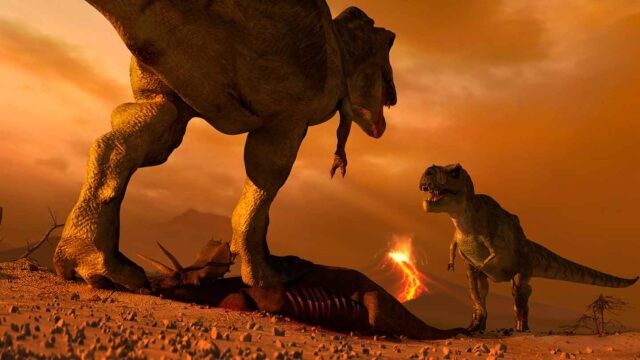
A new study published in the journal Biology Letters suggests that flowering plants survived the dinosaur-killing asteroid relatively unscathed. The study, conducted by researchers from the University of Bath (UK) and Universidad Nacional Autónoma de México (Mexico), found that flowering plants experienced a relatively low rate of extinction following the asteroid impact, compared to other plant groups.
The asteroid impact, which occurred 66 million years ago, is thought to have caused a global environmental catastrophe, leading to the extinction of the dinosaurs and many other plant and animal species. However, the study found that flowering plants were able to weather the storm and even thrive in the aftermath.
The researchers believe that there are several reasons why flowering plants were able to survive the asteroid impact. First, flowering plants have a variety of reproductive strategies that allow them to spread their genes quickly and widely. This helps them to adapt to changing environmental conditions. Second, flowering plants have a relatively short lifespan, which means that they are able to evolve more rapidly than other plant groups. This allows them to adapt to new challenges more quickly.
The study’s findings suggest that flowering plants are one of the most resilient plant groups on Earth. They have survived multiple mass extinction events in the past, and they are likely to survive any future threats as well. In fact, the researchers believe that flowering plants may even outlive humans.
Key Points
- Flowering plants survived the dinosaur-killing asteroid relatively unscathed.
- The study found that flowering plants experienced a relatively low rate of extinction following the asteroid impact, compared to other plant groups.
- The researchers believe that there are several reasons why flowering plants were able to survive the asteroid impact, including their varied reproductive strategies and short lifespan.
- The study’s findings suggest that flowering plants are one of the most resilient plant groups on Earth and may even outlive humans.
What Does This Mean for Us?
The findings of this study have important implications for our understanding of the evolution of life on Earth. They suggest that flowering plants are one of the most resilient and adaptable plant groups, and that they are likely to play a major role in the future of life on Earth.
The study also has implications for our understanding of the impact of human activities on the environment. As humans continue to alter the environment, it is important to remember that flowering plants are a vital part of the ecosystem. We need to take steps to protect flowering plants and ensure their continued survival.
How Can We Help Flowering Plants Survive?
There are a number of things we can do to help flowering plants survive. These include:
- Reducing our impact on the environment. This includes reducing pollution, deforestation, and climate change.
- Conserving natural habitats. This helps to protect flowering plants from human disturbance and development.
- Planting flowering plants in our gardens and communities. This helps to create a more diverse and resilient ecosystem.
- Supporting organizations that are working to protect flowering plants.
By taking these steps, we can help to ensure that flowering plants continue to thrive for generations to come.










